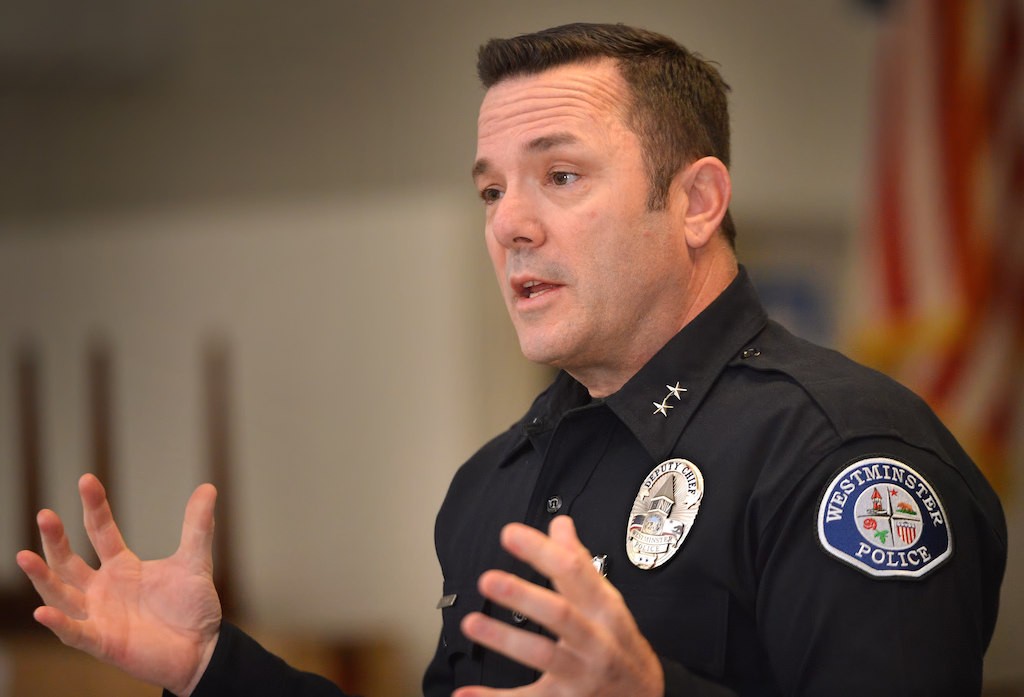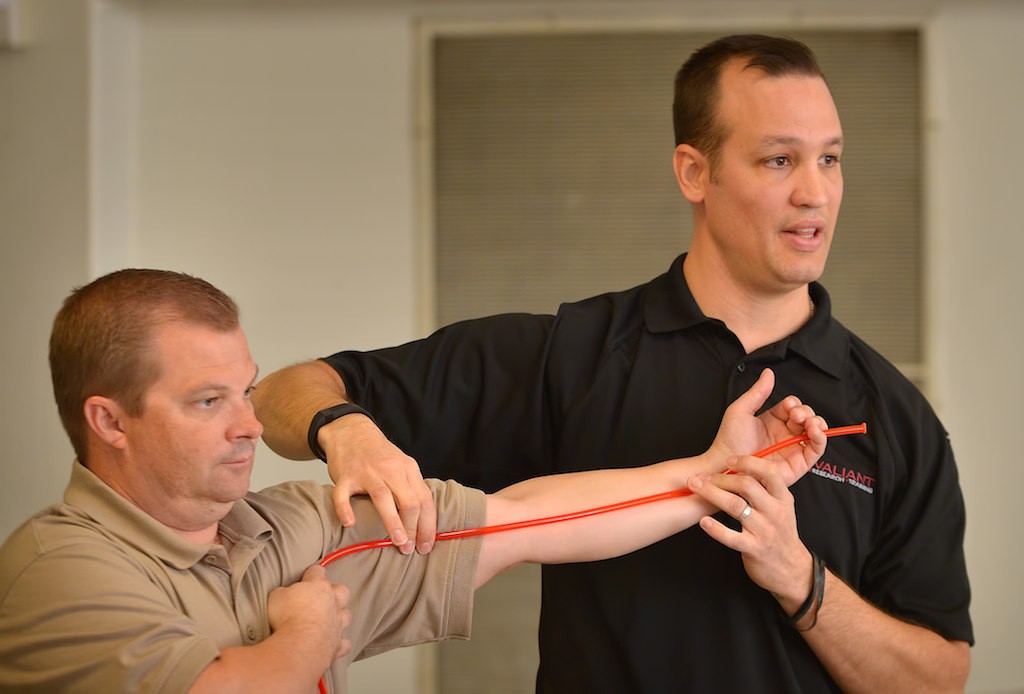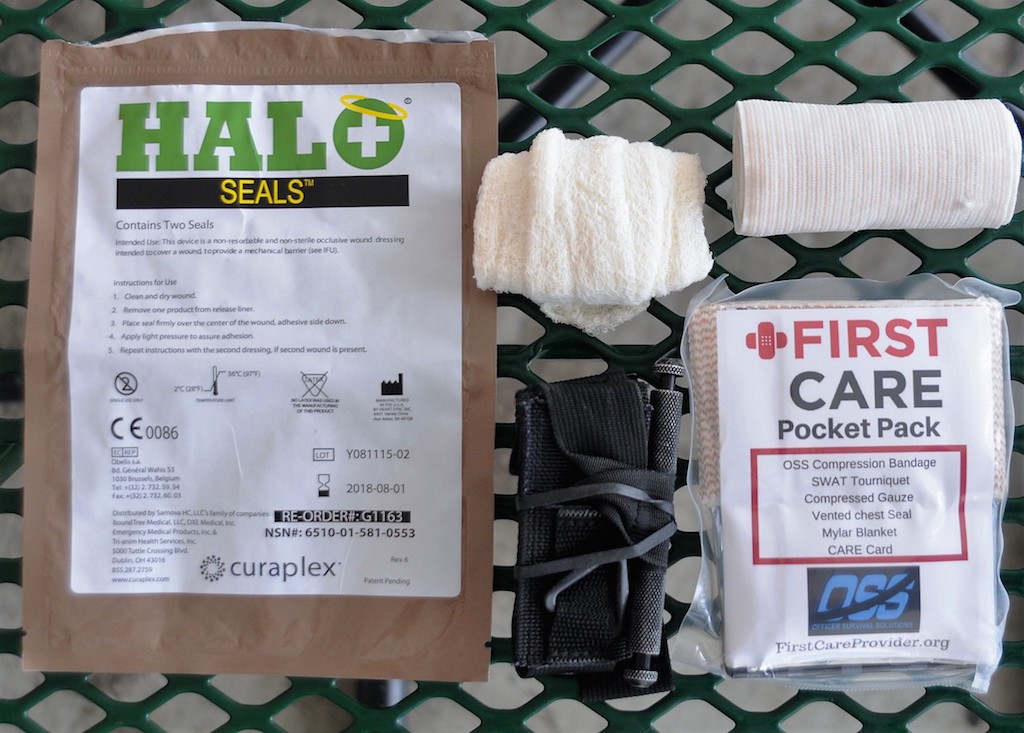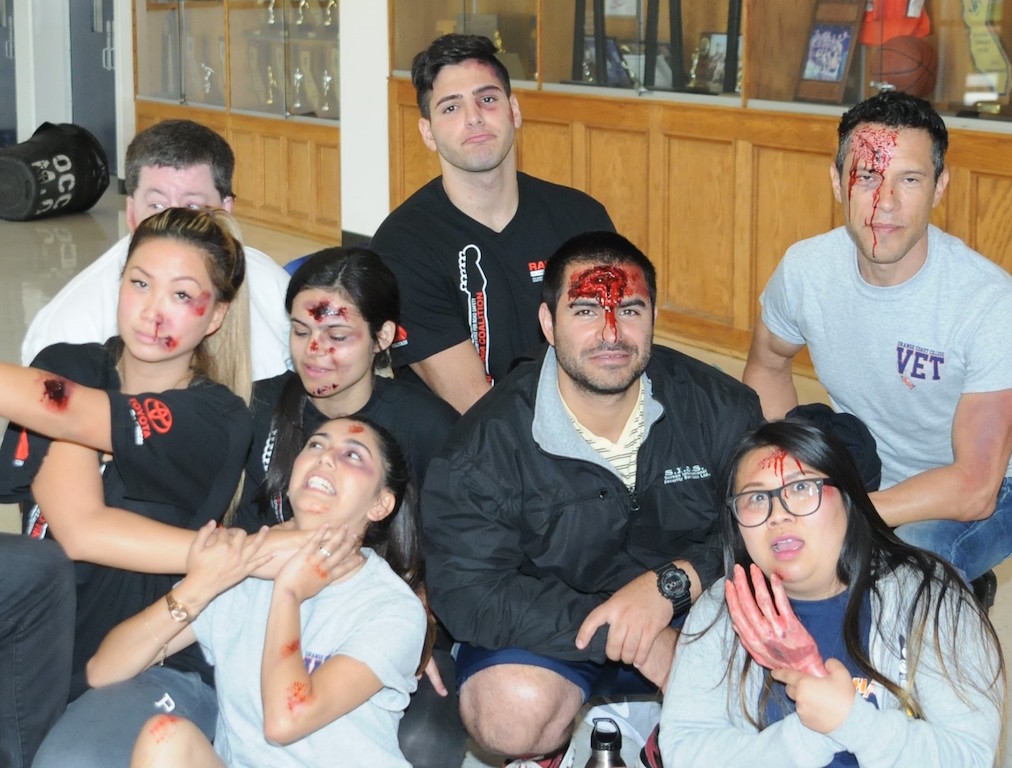Five people lay bleeding in the lobby of the Orange Coast College gymnasium — the aftermath of an earthquake that struck just seconds ago.
Some are moaning, while others lay motionless, not making a sound.
A 9-1-1 call has been made and first responders will likely arrive within four minutes.
That’s fast, but might not be fast enough, said Bill Harris, director of operations for First Care Provider, a nonprofit that trains civilians to assess injuries and provide enough treatment to keep injured victims alive until help arrives.
The scene at Orange Coast was staged by the organization as part of the training for college staff members and students.
Training consisted of three-plus hours of classroom instruction taught by members of the Westminster Police Department and Harris, followed by the mock earthquake scenario, in which participants applied bandages to wounds, checked for breathing and staved off bleeding by wrapping tourniquets around broken and severed limbs.
Westminster PD Acting Police Chief Dan Schoonmaker helped design the program, which has been taught over the past two-plus years to his officers, Police Explorers, city employees and Westminster school teachers.

File photo: Acting Chief Dan Schoonmaker addresses teachers from Westmont Elementary at the start of a First Responder training seminar at their school in Westminster.
Photo by Steven Georges/Behind the Badge OC
First Care Provider was founded by Harris, a paramedic and Naval Special Warfare veteran, Dr. Joshua P. Bobko, assistant professor of emergency medicine at Loma Linda University, and Todd Baldridge, Orange County Fire Authority paramedic.
The skills can be employed in the midst of medical emergencies created by active shooter situations, natural disasters or any accident that causes life threatening injuries, said Harris, one of the facilitators of the workshop.
“The typical active shooter response is three and half to four minutes and a typical person will bleed to death in two to three minutes,” Harris said. “We are trying to bridge the gap between when there is an emergency, particularly a traumatic emergency, and when the 9-1-1 response comes.”
One participant, Daniel Alavi, said he is quite familiar with the ever-present possibility of natural disasters, and these days, even the chance of terrorist attacks.

Orange Coast College student Sydney Vandermeer plays the part of a severely injured earthquake victim as part of a drill designed to teach OCC employees and students how to treat injuries before first responders arrive. Photo by Lou Ponsi/Behind the Badge OC
Alavi, who was living in Santa Cruz in 1989 when the Loma Prieta earthquake shook the region, said the workshop was “informative.”
“The terrorist angle is very new but the response is always the same,” Alavi said. “This has been a threat my entire life. (I want) to be ready for these kinds of disasters.”
Amy Duong is in the final stages of her nursing program and signed up for the training to get a feel for treating injuries with no medical supplies.
“At a hospital, you have all the supplies with you,” Duong said. “As a nurse, I thought it would be a benefit to me to learn what I would be able to do without any materials, if I were to see injuries or a disaster on the street.”

File photo: Todd Baldridge, MPD, EMT-P, left, and Joshua Bobko, MD, demonstrate to a group of teachers from Westmont Elementary the location of the brachial artery during a first responder training seminar at their school in Westminster.
Photo by Steven Georges/Behind the Badge OC
The First Care Provider program has been supported by first responders around the country, said Bobko, who serves as executive director and founder of First Care Provider.
“We’ve trained a cadre of instructors to go into the community and educate our population on the critical activities, communications and treatment steps for emergencies, particularly before EMS can arrive,” he said.
The hope is that the program gets paid forward, Harris added, and that the trainees become the trainers.
“Through education and through just a little bit of time and training, and not a high cost, you can really empower a community,” he said.

A kit such as this one contains bandages and a tourniquet and is used for rendering aid to injured victims to keep them alive before first responders arrive. Photo by Lou Ponsi/Behind the Badge OC
 Behind the Badge
Behind the Badge





